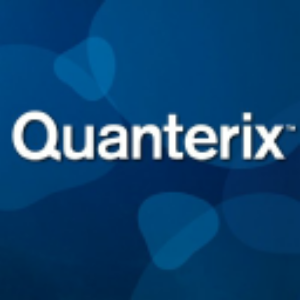Quanterix’s Simoa® Technology Powers Large, International Reference Range Study Utilizing Serum Neurofilament Light (sNfL) to Assess Neurological Disease Activity in Pediatric Patients
The company’s ultra-sensitive biomarker technology supports milestone achievement in establishing a method for clinicians to identify and interpret elevated values of sNfL in children and adolescents
The Blood Neurofilament Light Chain (NfL) is an innovative biomarker that specifically indicates neuroaxonal health. However, its clinical application has been constrained due to the lack of established reference ranges for children and adolescents. Accurate monitoring of neuroaxonal injury in neurologic and systemic diseases is of pivotal importance at population and individual patient levels. In the pediatric population, tools capturing neuroaxonal injury with high specificity would substantially facilitate early and accurate detection of conditions associated with short- and long-term neurological disabilities with considerable socioeconomic impact. This may also accelerate clinical trials evaluating the expanding library of targeted causal and disease-modifying treatments.
“By utilizing Simoa’s ultra-sensitive technology, our research team has been able to reach this milestone achievement for two major cohorts of children and adolescents in
The study, “Serum neurofilament light chain reference database for individual application in pediatric care,” is the most comprehensive study within this population to date, examining 2,667 samples from donors spanning different ages, an important factor known to affect sNfL values. Persons with neurological conditions were excluded from the reference range cohorts. Because of the diverse patient set, this study helped establish a statistically robust reference database, which can be used in conjunction with a new internet-based method to support clinicians when interpreting results of sNfL levels in individual children and adolescents aged 18 years old or younger. Establishing normative values for sNfL for pediatric cases provides a vital advance to overcome some of the existing constraints, paving the way for the clinical application of blood NfL in this population.
“sNfL measurements represent an important opportunity to advance the care of children with neurological conditions,” said Masoud Toloue, CEO at Quanterix. “Age-adjusted reference ranges for children expands the utility of blood NfL measurements to this population group and enables physicians to interpret what is ‘normal’ and ‘abnormal’ NfL in a quantitative and individual way in this age group for the first time. A particular advantage of the high sensitivity of the digital Simoa NfL assay is the ability to precisely measure NfL from small sample volumes, such as heel sticks from neonatal children, or even from dried blood spots. This allows a single platform to be used for all types of patients and sample types.”
“With the recent addition of NfL to our expanding menu of CLIA-validated lab developed tests, we are aiming our ground-breaking Simoa technology at neurological diseases across a large spectrum of patients, including children. For example, recent data suggest sNfL may be a suitable biomarker for disease activity in children with spinal muscular atrophy in the initial stages of the disease during early childhood. The clinical potential and impact of blood NfL continues to expand, both as a single assay and in combination with other biomarkers, and we look forward to further growing our menu of clinically validated Simoa assays toward improving clinical care,” continued Toloue.
To learn more about Quanterix’s Simoa® technology, visit: https://www.quanterix.com/simoa-technology/.
For more information about Quanterix’s work in neurology, visit: https://www.quanterix.com/therapeutic-areas/neurology/.
The Study
Led by Jens Kuhle at the University Hospital of
The study authored by A Abdelhak, F Petermeier and P Benkert et al., provides essential insights for the correct interpretation of NfL concentrations in the pediatric population, emphasizing its unique, age-related dynamics. These findings are particularly distinct from previous descriptions by the same group for the adult population.
This landmark research significantly enhances the precision of pediatric health assessments and diagnoses, thereby contributing to the evolution of global children's healthcare. The established reference dataset provides healthcare providers with a definitive standard for comparison, enabling more accurate interpretation of NfL levels in children's blood tests.
In turn, this facilitates more precise diagnoses, optimizes monitoring of disease progression, and enables a more individualized approach to treatment. With this key reference range, the ability to understand and monitor children's neuroaxonal health is significantly enhanced.
About Quanterix
From discovery to diagnostics, Quanterix’s ultrasensitive biomarker detection is fueling breakthroughs only made possible through its unparalleled sensitivity and flexibility. The Company’s Simoa® technology has delivered the gold standard for earlier biomarker detection in blood, serum or plasma, with the ability to quantify proteins that are far lower than the Limit of Quantification (LoQ) of conventional analog methods. Its industry-leading precision instruments, digital immunoassay technology and CLIA-certified Accelerator laboratory have supported research that advances disease understanding and management in neurology, oncology, immunology, cardiology and infectious disease. Quanterix has been a trusted partner of the scientific community for nearly two decades, powering research published in more than 2,000 peer-reviewed journals. Find additional information about the
Forward-Looking Statements
This press release contains forward-looking statements within the meaning of the Private Securities Litigation Reform Act of 1995. Words such as “may,” “will,” “expect,” “plan,” “anticipate,” “estimate,” “intend” and similar expressions (as well as other words or expressions referencing future events, conditions or circumstances) are intended to identify forward-looking statements. Forward-looking statements in this news release are based on Quanterix’s expectations and assumptions as of the date of this press release. Each of these forward-looking statements involves risks and uncertainties. Factors that may cause Quanterix’s actual results to differ from those expressed or implied in the forward-looking statements in this press release are discussed in Quanterix’s filings with the
View source version on businesswire.com: https://www.businesswire.com/news/home/20230731189843/en/
Study Media Contact:
Prof. Dr. med. Dr. phil. Jens Kuhle
Head Multiple Sclerosis Centre and Neuroimmunology Unit
Neurology
Departments of Head, Spine and Neuromedicine, Biomedicine and Clinical Research
Jens.kuhle@usb.ch
Quanterix Media Contact:
Maya Nimnicht, PAN Communications
(510) 334-6273
pan.quanterix@pancomm.com
Investor Relations Contact:
Ed Joyce, Quanterix
(610) 306-9917
ejoyce@quanterix.com
Source: Quanterix Corporation







